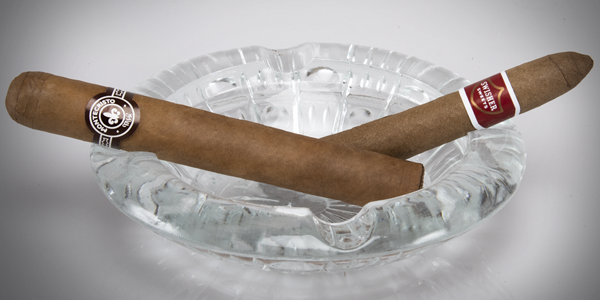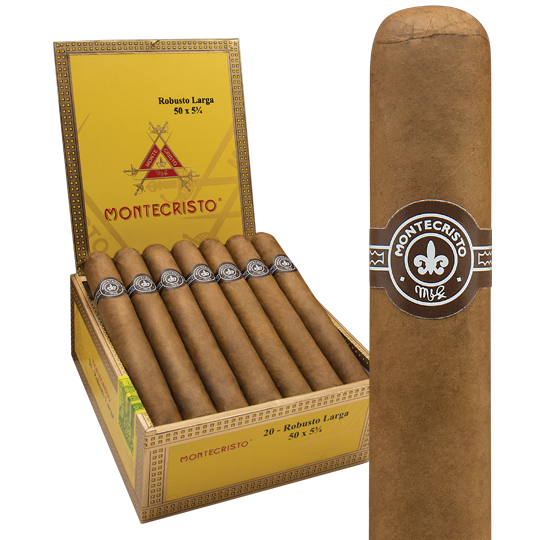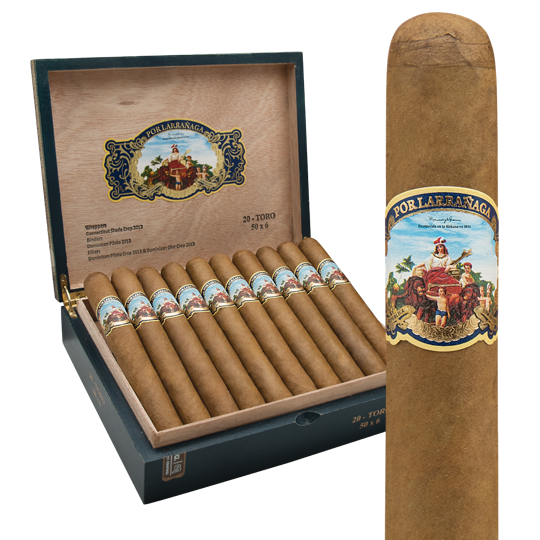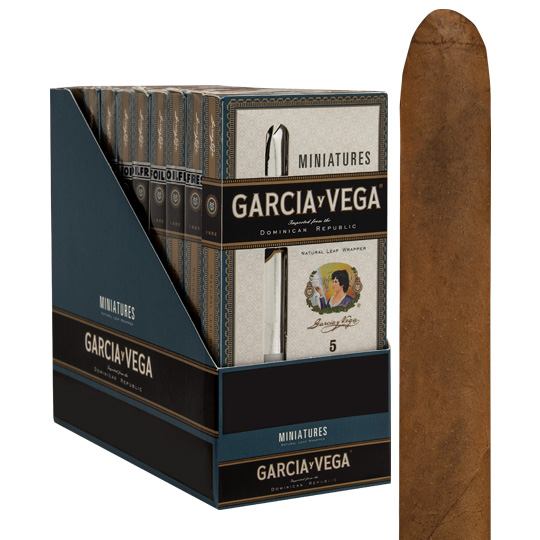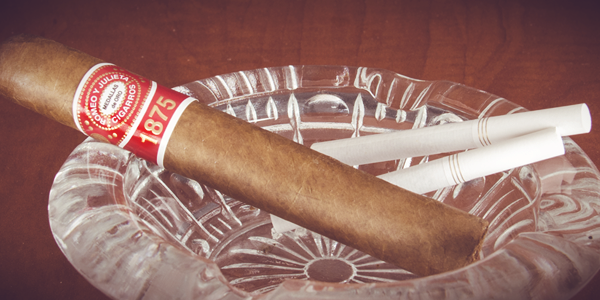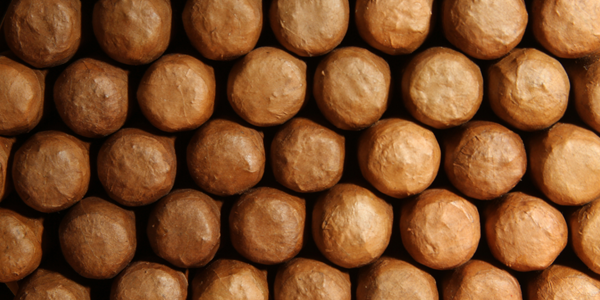Handmade vs. Machine Made Cigars
The long and short of it. That’s really, for the most part, what this lesson is about. Filler, that is. Handmade cigars are usually made with long filler, a bunch (usually three or four) whole, trimmed tobacco leaves that have been rolled together to create a cylinder. In most machine made cigars, the filler is short, made of chopped-up tobacco scraps and sometimes the stems of tobacco leaves. What does this all mean for your enjoyment of a cigar? Well, that depends. First, just a little history.
The earliest patent for a cigar rolling machine seems to be in 1883 or 1888. The inventor is listed as ‘Oscar Hammerstein’ of New York. This Oscar Hammerstein, who also opened an opera house in Harlem, was the grandfather to Oscar Hammerstein II, the famous lyricist (Rodgers and Hammerstein ring a bell?). Cigar-making machines first appeared in use in the 1920s in the United States. Until then, all cigars were made by hand. Hammerstein, as the New York Times reported on March 29, 1913, later ‘improved’ the machine, writing of the inventor, ‘Turns from Opera to Announce Perfection of a Device to Use Tobacco Stems.’ The sub-headline added, ‘Means a Great Saving, He Says, as It Makes the Stems Usable and Pleasant to Smoke.’
So, machine made cigars are indeed less expensive than their contemporary handmade stogies. This is what drove a leading Cuban manufacturer, Por Larrañaga, to import machines in 1925. As we’ve reported before, Por Larrañaga became the first Cuban factory to make cigars by machine, having imported the new rolling and wrapping machines from the United States. Those machines increased production and reduced the cost of the cigars by about 25 percent. A worker could be trained to run the machine in two weeks compared to the years it took to train a roller. At a time of labor unrest, the move to automation led to strikes and a boycott by cigar rollers. Por Larrañaga returned the machines.
Okay, history class is over. Let’s get to the important differences between handmade and machine made cigars.
Smokeability
Let’s assume that a premium, handmade cigar is our benchmark. The consensus has always been that this type of cigar is superior to machine made smokes. There are very quantifiable reasons for that consensus. Let’s agree, for the sake of clarity, that flavor is a subjective characteristic in cigars. I might like a strong cigar with a lot of Ligero tobacco in it. This is a powerful leaf. You might like something milder. We’re both right for our own tastes. In terms of ‘smokeability,’ the handmade cigar, made properly, will allow for a longer, slower burn time and a cooler smoke. A common characteristic of machine made cigars is that they burn fast. And that often means they burn hot. Why?
The Wrapper
The wrapper of a handmade cigar, again, is an intact, trimmed tobacco leaf. All natural. The leaf is pliable and wrapped tightly around the binder and filler of the cigar. The handmade wrapper generally retains enough moisture from its natural oils to allow it to burn slowly and evenly. Light a good handmade cigar. My favorite is the Ashton ESG. Light it badly. You’ll likely notice that the burn evens out despite the fact that, say, you set only half of the foot ablaze. This is a well-made cigar. The wrapper leaf burns evenly and is almost self-correcting.
With machine made wrappers, the ingredients are not just tobacco. In fact, the wrapper of a machine made cigar often is not made exclusively of natural materials. The reason for that is that the wrapper must be strong enough – that is, not particularly delicate or supple –to withstand the manipulation of the machine.
Filler
What the wrapper is wrapping also varies. As mentioned, that long filler burns slowly. The short filler burns faster because all those little pieces, glued together, are combusting at rapid-fire rates. The short filler here can also contain paper, preservatives and various chemical additives to make the cigar burn better and create a consistent flavor. Some machine made cigars do use long filler, but most use what is called ‘HTL,’ or homogenized tobacco leaf. That’s the mixture of scrap tobacco and a cellulose adhesive used to hold the scraps together. This HTL is often put through an extruder that creates a sheet – like paper – that the maker can cut to the desired size.
Some ‘handmade’ cigars are bunched by machines and finished by hand, with the wrapper being applied by an experienced roller. This is still done quite a bit in Cuba. Yes. Cuba. But usually the filler is short.
In most cases, the filler in a handmade cigar is blended to create a distinctive flavor profile. This, as we’ve discussed in other articles, is done by carefully growing, curing and selecting leaves that complement one another. From year to year, premium handmade cigars can vary slightly in flavor, but master blenders recognize this and work to use specific leaves to get as close as possible to the original flavor. Remember, this is an agricultural product that is affected by weather and soil conditions.
Binder
Handmade cigars have a binder leaf, again made of all-natural tobacco. A buncher gathers the filler leaves and wraps them in a binder leaf (sometimes two). Then, the bunched tube is passed along to a torcedor, or roller. Sometimes one person handles both tasks.
With machine made cigars, at least the better and more expensive ones, two binder leaves are fed onto a machine plate where the binder is cut. The short filler runs through a hopper that drops a pre-measured amount of the short filler into the binders as they move on a conveyor belt. At the end, the tubes are trimmed to size. The cheaper, and inferior, machine made cigars are made in much the same way as cigarettes. The filler scraps are fed into a machine that creates long rods of the short filler. That is then covered by a continuous sheet of binder. This process creates a long snake-like tube that is sealed at each end to the right length. If you’ve ever seen sausage made, well, you know.
The Verdict
Look, clearly I believe premium, handmade cigars are superior in just about every way to machine made smokes. That said, the cost of machine made cigars is significantly less than handmade ones. And, if you’re like me, you probably have smoked your share of machine made cigars in your youth. Ah, those late night poker games in high school, the air perfumed with the aroma of Tijuana Smalls as I drew unsuccessfully to an inside straight. So, objectively, if your main concern is price, take a look at our selection of machine made cigars. Many of them are really sweet in flavor. If you dig that, you might enjoy trying Blackstone. It’s machine made with pipe tobaccos and that homogenized wrapper.
At a minimum, it’s not an entirely bad idea to have some inexpensive machine made cigars lying around for those mooching friends who wouldn’t know a Garcia y Vega from a handmade Montecristo. Give your friend the Garcia y Vega. You smoke the handmade cigar. We’re done here.

